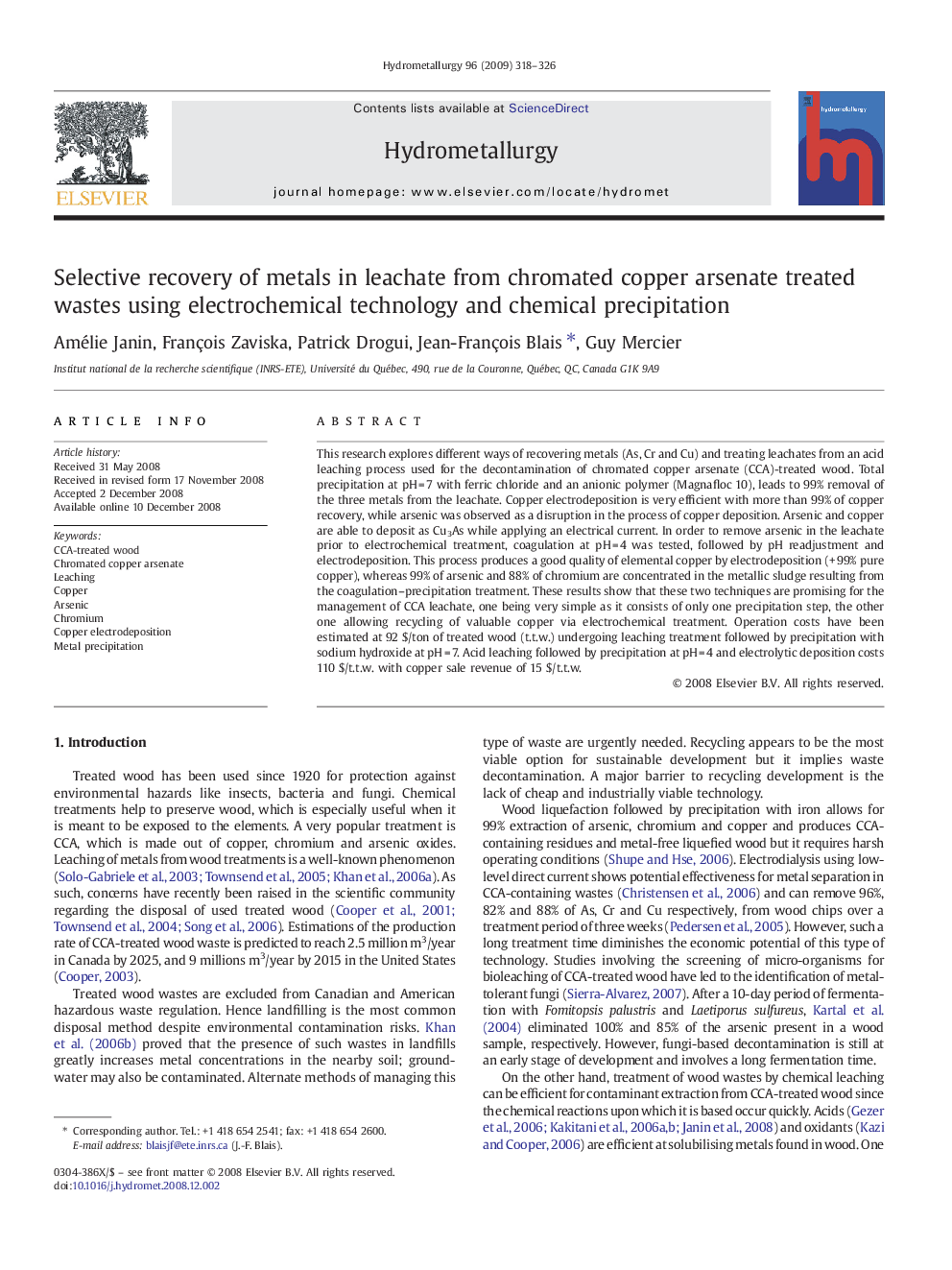| Article ID | Journal | Published Year | Pages | File Type |
|---|---|---|---|---|
| 213089 | Hydrometallurgy | 2009 | 9 Pages |
This research explores different ways of recovering metals (As, Cr and Cu) and treating leachates from an acid leaching process used for the decontamination of chromated copper arsenate (CCA)-treated wood. Total precipitation at pH = 7 with ferric chloride and an anionic polymer (Magnafloc 10), leads to 99% removal of the three metals from the leachate. Copper electrodeposition is very efficient with more than 99% of copper recovery, while arsenic was observed as a disruption in the process of copper deposition. Arsenic and copper are able to deposit as Cu3As while applying an electrical current. In order to remove arsenic in the leachate prior to electrochemical treatment, coagulation at pH = 4 was tested, followed by pH readjustment and electrodeposition. This process produces a good quality of elemental copper by electrodeposition (+ 99% pure copper), whereas 99% of arsenic and 88% of chromium are concentrated in the metallic sludge resulting from the coagulation–precipitation treatment. These results show that these two techniques are promising for the management of CCA leachate, one being very simple as it consists of only one precipitation step, the other one allowing recycling of valuable copper via electrochemical treatment. Operation costs have been estimated at 92 $/ton of treated wood (t.t.w.) undergoing leaching treatment followed by precipitation with sodium hydroxide at pH = 7. Acid leaching followed by precipitation at pH = 4 and electrolytic deposition costs 110 $/t.t.w. with copper sale revenue of 15 $/t.t.w.
